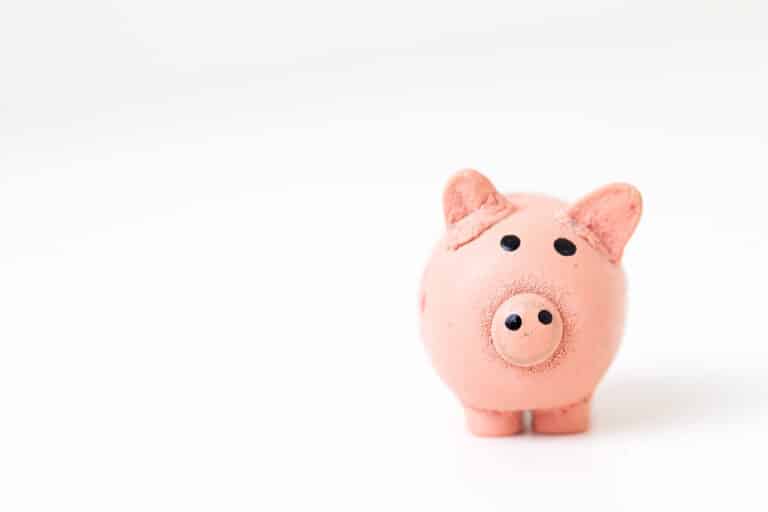Depending on your bank, there are several basic options available for savings accounts. The differences depend on how much money you will put into the account and how often—if at all—you expect to use it. Ideally, a savings account is to store extra money somewhere safe where it will grow.
3 Types of Savings Accounts
There are many variations of savings accounts, but the most common are these three:
- Traditional
- High-yield
- Money market
We’ll take a look at these three common savings accounts before we cover special types of savings accounts like certificates of deposit (CDs).
Traditional Savings Accounts
A traditional savings account can be opened at virtually every bank, whether brick-and-mortar or online.
Once money goes into the account, you receive a modest rate of interest. You will generally be issued a bank card for your savings account that you can use at ATMs.
It is simple to open this type of account in most banks, such as the Royal Bank of Canada, Lloyd’s TSB, National Bank Australia, and Citibank. If you already have a checking account with a bank, you can simply speak with an associate and open a companion savings account.
If you want to open a savings account purely online, there are several options.
Popular online-only savings accounts include:
- Tangerine in Canada
- Capital One 360, Ally, or Varo in the U.S.
- Paragon and Aldermore in the U.K.
- MyStateBank and Virgin Money in Australia
Note that this list is not exhaustive. With any of these online-only accounts, you can sign up without stepping foot in a bank.
High-Yield Savings Accounts
A high-yield savings account allows you to benefit from a high-interest rate. That means the more money you deposit and the longer it stays put, the more money you will make. These accounts may not make you rich, but they will provide a better return on your money. As of July 2021, interest rates for some of these accounts in the U.S. fall around 0.50%.
Some banks allow transfers and withdrawals from these accounts, but many do not. If you take the money out, even in part, you may incur a fee.
The purpose of a high-yield account is to watch your money grow safely, over a period of time. It’s a good option for long-term savings you don’t plan to access immediately.
You are likely to find high-yield savings accounts available at most large and online banks. Consider this type of account if you can meet the minimum deposit requirements without putting a strain on your current financial situation.
Money Market Accounts
A money market account uses aspects of both the high-yield savings account and a normal checking account. You will have some access to your money each month, but are limited in terms of how many times you can withdraw or transfer funds.
You also need to keep a certain amount of money in the account at all times to avoid penalty charges.
Other Types of Savings Accounts
If your financial situation is more complex, you might benefit from opening a special savings account. These are common, but the details of each are often unique to the bank you choose. Do some research and ask questions to find the best option for your needs.
Certificate of Deposit Account
A certificate of deposit, or CD, is a timed deposit in a bank. The deposit is for a specific amount that the bank requests, and then you decide how long you want to leave it there. Again, the bank will have a few options pre-selected for you to choose from.
You will usually find CDs available for as short a term as 30 days, or as long as about 60 months. The longer you agree to leave the money, the higher the guaranteed interest.
Traditionally, these were only available through physical banks, but you can find online CDs now that may offer even higher rates of interest.
Cash Management Account
A cash management account is a great option if you want to keep your savings in the same account that you use for daily banking. All your financial transactions are within just one bank account. That means you do not need separate types of accounts to do various things with your money, such as buy stock, sell shares, make investments, and borrow money.
This type of account simplifies financial management for people with many transactions happening regularly. You can save time and banking fees with a cash management account since you will not have to maintain multiple investing and credit accounts.
Specialty Savings Account
Specialty savings accounts are unique bank accounts that help you reach a savings goal. Instead of putting your money into a regular savings account with no particular purpose, this account lets you save for a home down payment or your child’s schooling.
Other specialty accounts help you to raise money for a specific person instead of a financial goal.
Look for special savings options at banks, brokerages, credit unions, or investment companies.
Examples of specialty purposes include:
- Children’s savings
- Savings for other dependents
- College funds
- Kids’ savings accounts
- Traditional and Roth Individual Retirement Accounts
- Health savings
As with other types of flexible savings accounts, these will come with certain restrictions. In particular, avoid taking money out of a specialty savings account so you don’t incur high fees.
How to Choose the Best Savings Account
The simpler your finances, the less complex your savings account needs to be. When making a choice, take a careful look at your financial transactions to figure out the best option for you. If you’re happy with your current bank, you might start by simply opening a traditional savings account with them.
If you’re looking to grow your savings more quickly, and you don’t need to access the funds regularly, a high-yield or money market account might be best.
